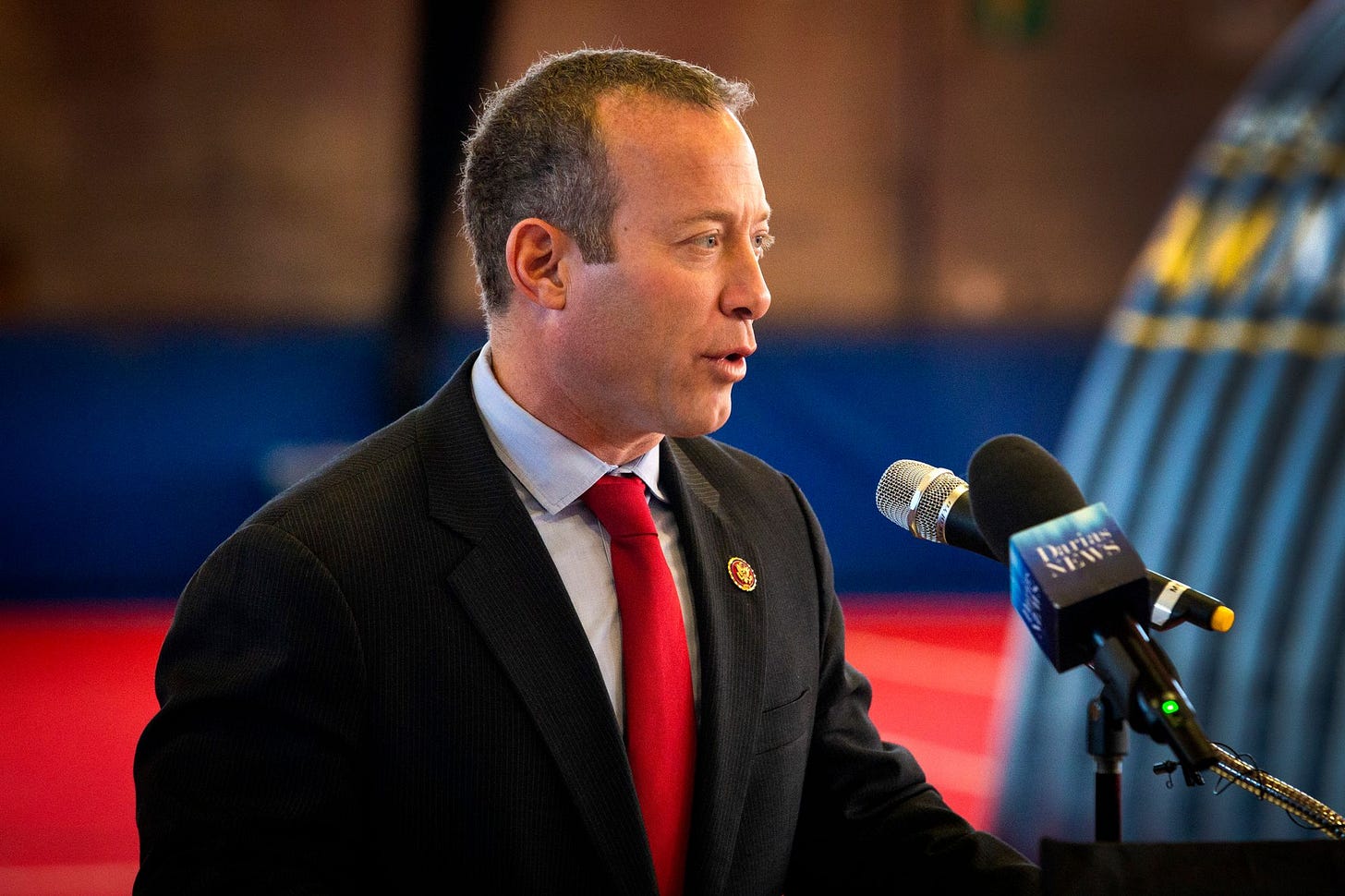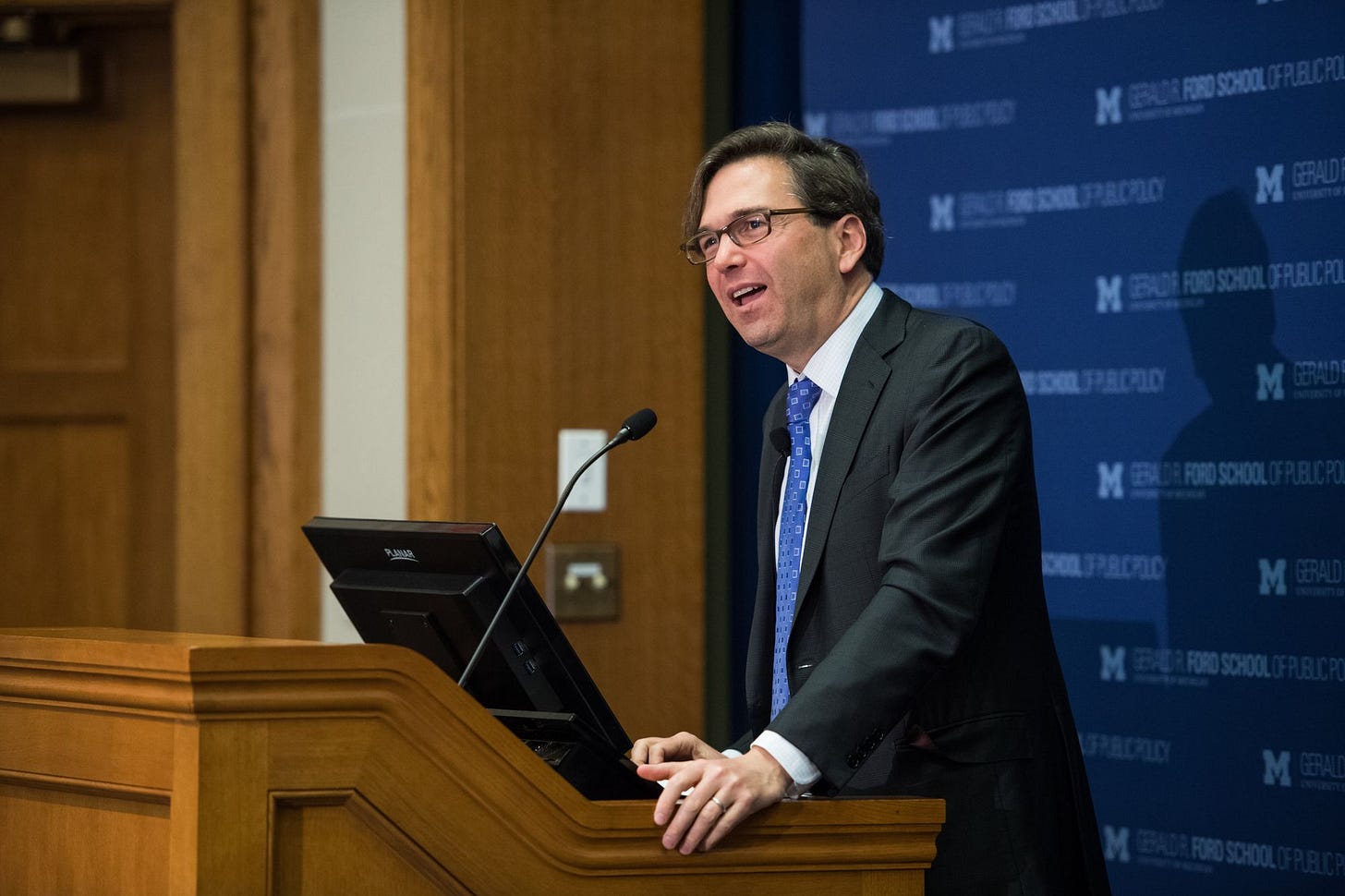Why Democrats are getting squeamish about taxing the moderately rich
A new breed of Democrat represents a growing high-income demographic.

On Friday, a group of Democratic Congressmen from New Jersey—Josh Gottheimer, Tom Malinowski, Mikie Sherrill, and Bill Pascrell—gathered to fight for a tax cut that would overwhelmingly benefit taxpayers who earn more than $200,000 per year. Their effort says a lot about the changing demographics of the Democratic Party.
In 2017, Donald Trump’s tax reform law capped the deduction for state and local taxes (SALT) at $10,000. The four New Jersey Democrats, and allies in other states like Rep. Tom Suozzi (D-NY), have constituents with relatively high incomes who live in areas with relatively high state and local taxes. As a result, those constituents would benefit a lot if the tax code allowed them to once again deduct all—or at least more—of their state and local tax bill from their federal taxes.
So these Democrats are currently negotiating to get that tax cut included in the Democrats’ legislative package.
One reason the partisan valence of this issue seems scrambled is that the SALT cap provision has an unusual history. Republicans are generally loath to raise taxes, but the authors of the 2017 bill made an exception with the SALT deduction. Capping the SALT deduction disproportionately impacted high-tax, urban areas—areas that are overwhelmingly Democratic. This pushed Democrats to take the other side of the issue, portraying Trump as singling out Democratic-leaning parts of the country for unfair treatment. For some politicians, this pure red-vs-blue framing tempered Democrats' normal enthusiasm for taxing the wealthy.
But it's notable that the most avid supporters of SALT cap repeal in Congress haven't limited themselves to arguing the provision hurts Democrats or makes it harder for states to raise taxes. Rather, they've deployed the kind of unabashed anti-tax rhetoric that until recently was almost exclusively the domain of the GOP.
Sherrill refers to the absence of a deduction as an unfair or unjust double tax. Suozzi argues that it is driving people to leave his state. Virtually all of them refer to the deduction as tax relief, and consider that a good thing.
But the loudest of these representatives has to be Gottheimer, who has used all of these arguments, referring to the provision dozens of times in recent months, including on Friday.
Perhaps his most colorful statement as a member of Congress was his response to the 2017 tax law. “I want tax cuts for New Jersey, but the current tax hike bill is an assault on New Jersey taxpayers,” it began. “New Jersey is one of the top tax paying states in the nation, which is why I’ve been pushing for years to cut taxes for residents and for businesses of all sizes.” It even criticizes other states as “moochers.”
In the interest of fact-checking, I should note that Gottheimer’s district likely did get a net tax cut, per Tax Foundation analysis. In his defense, though, this wouldn’t have been knowable to him at the time, and the tax cut was smaller for his district than for most others, and some of his constituents’ taxes were raised.
But Gottheimer’s rhetoric is largely anti-tax. And a big reason that Democrats like Gottheimer often sound like Republicans when they talk about taxes is that many of his constituents were Republicans just a few years ago. When Donald Trump won the Republican nomination in 2016, it caused—or perhaps accelerated—a partisan realignment. At the same time working-class whites were shifting toward Trump’s Republican party, a group of high-income, high-education voters were shifting into the Democratic column.
Many of those new Democrats live in Gottheimer’s district, which swung from red to blue in 2016. So when Gottheimer demands tax cuts and complains about moochers, he’s reflecting the views of a growing faction of the Democratic coalition.
Democrats attract more rich voters than they used to

The growth of the high-income Democratic faction can’t be perfectly measured—there is no database that exactly matches voters and their incomes—but there are plenty of ways to see the trend indirectly.
For example, a Wall Street Journal analysis observed the changing patterns of presidential voting in the 100 richest U.S. counties. The Democratic share rises over time. Walter Mondale carried just 7 of them in his 1984 landslide loss. In his 1992 victory, Bill Clinton carried just 36 of the 100. Joe Biden carried 57 of them in 2020.
One of those 57 counties was Bergen County, New Jersey, just west of New York City. The northern parts of Bergen County are in New Jersey’s 5th Congressional District—Josh Gottheimer’s district.
Political scientists sometimes look at a second demographic dimension, education, to get a more nuanced picture of the electorate. A 2019 study of realignment from Herbert Kitschelt and Philipp Rehm divides voters into four permutations of education and income levels:
At first glance, the Kitschelt and Rehm analysis would suggest that income is kind of a mixed bag. Democrats and Republicans are each gaining among one of the high-income groups. But of the two high-income groups, the Democrats are gaining with the larger (and growing) one, while Republicans are gaining with the smaller (and shrinking) one.
In 2020, Democrats lost the vote of high-income households at the presidential level, according to exit polls. But I would caution against taking this too literally. Family earnings tend to rise with age and with marriage. An uncontrolled income comparison between younger Democrats and older Republicans can be misleading.
For example, compare a one-person household, a 25-year-old management consultant who earns $90,000 and votes Democratic, to a four-person household supported by a 53-year-old electrician who earns $110,000 and votes Republican. The Republican household makes more money, but only in absolute terms, not per capita. And it’s mostly because the electrician is older, and hence in his peak earning years. It’s not because he’s in a higher-earning profession.
My guess is that if you control for age, Democrats are already richer than Republicans. Regardless, Democrats are still gaining in exit poll share for high-income households, even if they are not currently winning it.
The realignment shows in fiscal policy
Kitschelt and Rehm would not be surprised by the anti-tax language deployed by the SALT Democrats. They argue that high-income voters—even the high-education kind that vote for Democrats—are generally skeptical of taxation and redistribution.
So the SALT coalition’s rhetoric makes sense: they are representing their voters in the language that most appeals to them. Gottheimer is the new representative from New Jersey’s 5th, and that’s what somebody from New Jersey’s 5th sounds like on taxes. Gottheimer’s Republican predecessor, Scott Garrett, also liked teeing off on the opposing party’s tax increases. Nobody has necessarily changed their views: it is just that the borders of Blue America have been redrawn slightly.
But given a thin majority in the House (there are only eight more Democrats than Republicans) appeasing the SALT coalition and its constituents is a significant issue for Biden. And it could substantially change what Democratic policy looks like. From Cornerstone Macro’s Don Schneider, here is how the current Ways and Means proposal looks, with and without SALT restoration.
The SALT coalition’s request would have a dramatic direct impact on high-income taxpayers. People making between $100,000 and $200,000 (the average income in Bergen County lies in this range) would get a slightly larger tax cut than they do under the Biden proposal without SALT restoration. Furthermore, people earning between $200,000 and $500,000 (about the 95th to the 98th percentile of the U.S. income distribution) would receive a net tax cut. People in the $500k to $1 million range would see most of their net tax increase under the baseline Ways and Means proposal evaporate.
Finally, taxpayers earning more than $1 million would benefit a great deal from full SALT restoration. But the Democratic commitment to taxing the super-wealthy is strong enough, and built enough into the Ways and Means proposal, that even a bill with full SALT restoration would still hike their taxes.
The realignment story isn’t entirely about the SALT-focused members: it’s important to pause and think about the tax rates even under the Ways and Means proposal. Even without a restoration of the SALT deduction, there is no net tax increase for people between the 95th to 98th percentile of the U.S. income distribution.
This reflects notes of tax skepticism that have been seeping into Democratic policy at the national level. Some of it comes from Biden himself. “If you make less than $400,000, you won’t see one single penny in additional federal tax,” Biden assured voters in an interview earlier this year.
Rigid commitment to this principle is probably impossible; “it's not something that can be taken seriously because to take it seriously would mean you can't do any tax increase,” Tax Foundation’s Erica York told me. She’s exaggerating—but not by much.
But the spirit of this pledge matters, and when it comes to redistribution, Biden has effectively offered to leave about 99 percent of Americans out of it. I believe this suggests something meaningful about the politics of Democrats with 96th or 97th percentile incomes: many of them don’t want to participate in redistributive schemes, and Biden is respecting that wish.
Left-leaning wonks are split on SALT, but oppose Gottheimer’s approach

Some left-of-center policy experts favor retaining the SALT deduction—at least in principle. They argue that state-level taxes on the rich are a good thing, but the forces of “tax competition” are strong; rich people might move from high-tax states to low-tax states. Because states fear this, they don’t raise taxes on the rich as much as they want to. You can therefore use the federal government to soften that blow by letting them deduct that income on their federal taxes, and pay for it with higher federal tax rates.
Jason Furman, a former chair of the Council of Economic Advisors under Obama, would support this approach in theory, but he acknowledges this isn’t the situation on the ground: “None of the SALT advocates in Congress are pushing for a top rate above 39.6% to make up for the cost. Restoring SALT would come at the expense of revenue, progressivity, or priorities like preschool, paid leave, child care, climate, etc.”
In other words, Furman wants to offer a trade: the SALT deduction comes back, and Democrats enact even bigger upper-bracket tax hikes to make up for it. But in Furman’s analysis, the SALT coalition in Congress aren’t making this trade; they’re just asking for their deduction back, and some show indifference (at best) to the overall project of raising taxes.
In the absence of much higher federal rates, SALT restoration has little appeal to left-of-center wonks. Many are pushing back against the pro-SALT forces. The left-wing Institute on Taxation and Economic Policy argues: “it is hard to imagine that repealing the SALT cap—at an annual cost of roughly $100 billion—would spur enough progressive state and local tax increases (or prevent enough regressive tax cuts) to trigger a net tax increase on high-income families.” They see the SALT deduction as a net tax cut for the rich that will crowd out other priorities in practice.
In other words, the negotiating positions and the rhetoric of the SALT coalition in Congress don’t really match the views of left-of-center wonks who enjoy tax hikes. Instead, many of those members identify as Democrats primarily for non-tax-related reasons. And their negotiating position, coupled with Biden’s pledge, is likely to create a favorable tax environment for the moderately rich.



